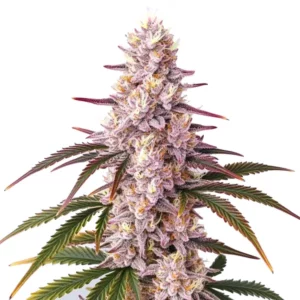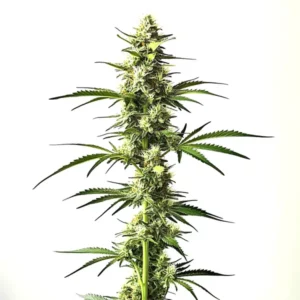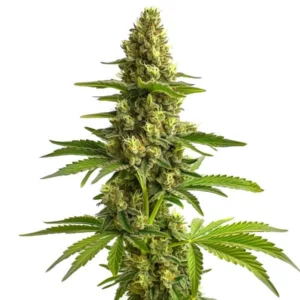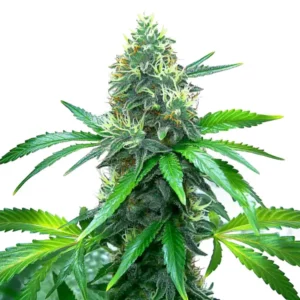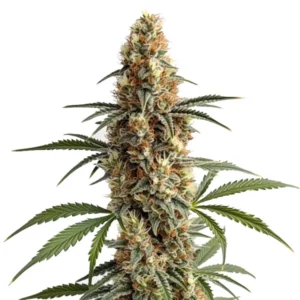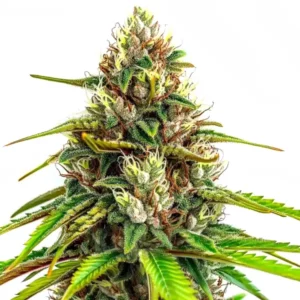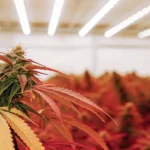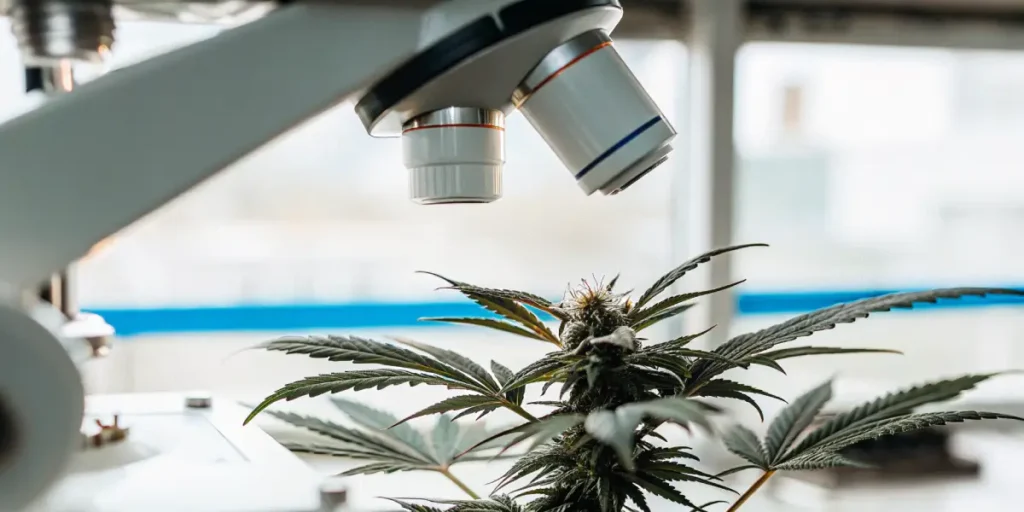
Environmental Factors Affecting Cannabis Laticifers
Growing cannabis is both an art and a science. One of the more scientific aspects involves knowing laticifers. These are specialized cells in plants that produce latex, a milky fluid. In cannabis, laticifers can influence the plant’s health and resin production. Environmental factors affecting cannabis laticifers can be numerous, ranging from soil quality to temperature.
For new and seasoned growers, knowing how environmental changes affect laticifers can be crucial. It helps in maximizing yield and potency. Different strains from Blimburn Seeds, like Blue Dream, are known for their robustness, but they still require optimal conditions to thrive. Let’s dive into the specifics of how external conditions affect these essential plant components.
Recommended Strains
Blue Dream
-
THC: 17% - 24%
-
Type of seed: Feminized
-
Phenotype: 50% Sativa / 50% Indica
-
Flavor: Berry, Blueberry, Mango, Sweet
-
Day to flower: 8 - 10 weeks
Gelato
-
THC: 27%
-
Type of seed: Feminized
-
Phenotype: 50% Sativa / 50% Indica
-
Flavor: Berry, Citrus, Sweet
-
Day to flower: 8 - 10 weeks
Cannabis strains like Gelato and Bruce Banner 3 from Blimburn Seeds also have unique requirements. By controlling environmental factors affecting cannabis laticifers, growers can significantly improve their outcomes. From water availability to soil composition, each element plays a unique role.
Climatic Influences on Cannabis Laticifer Productivity
The climate in which cannabis is grown can dramatically impact laticifer productivity. Humidity and rainfall are key players. Too much moisture can lead to mold, while too little can stress the plant. Laticifers respond to these climatic factors by adjusting the amount of latex they produce.
In regions with high humidity, strains like Blue Dream are ideal. Their resilience helps counteract any negative climatic influences on cannabis laticifer productivity. On the flip side, arid climates require strains that can tolerate dryer conditions, ensuring that the laticifers remain functional and productive.
Environmental factors affecting cannabis laticifers also include the amount of sunlight the plants receive. Sunlight influences the photosynthesis process, which in turn affects the health of the laticifers. Inadequate sunlight can weaken the plants, while too much can cause stress, so finding the right balance is crucial for optimal latex production.
Climatic influences on cannabis laticifer productivity can vary greatly from one geographical region to another. Knowing the local climate and making necessary adjustments can help growers enhance the resilience of their crops. This is especially true for outdoor growers who rely heavily on natural environmental conditions.
- Humidity levels: Aim for 40-60% during flowering.
- Temperature: Maintain between 70-85°F for optimal growth.
- Rainfall: Ensure adequate drainage to avoid waterlogging.
These climatic influences on cannabis laticifer productivity are crucial for maintaining healthy plant metabolism. By knowing the specific needs of your chosen strain, you can better manage these environmental factors.
Promos & Deals
Soil Composition Impact on Cannabis Latex Production
Soil isn’t just dirt; it’s a complex environment teeming with life. The soil composition impacts cannabis latex production significantly. Nutrient-rich soil encourages healthy laticifer growth, while poor soil can stunt plant development.
For optimal growth, consider the pH level of your soil. A slightly acidic pH of 6.0 to 7.0 is ideal for cannabis. This ensures that nutrients are readily available for uptake by the roots, impacting cannabis latex production directly.
The soil composition impact on cannabis latex production cannot be ignored, as it plays a pivotal role in determining the overall health of the plant. Incorporating organic matter such as compost can enhance soil fertility, providing the necessary nutrients for robust laticifer activity. This is especially important for strains that demand a nutrient-rich environment to reach their full potential.
Environmental factors affecting cannabis laticifers extend to the microbial life within the soil. Beneficial microbes can aid in nutrient absorption and improve soil structure, which in turn supports healthy laticifer development. Regular soil testing and amendments can help maintain the ideal conditions for cannabis growth and latex production.
- pH level: Maintain a range of 6.0 to 7.0.
- Organic matter: Incorporate compost or aged manure.
- Drainage: Ensure soil is well-drained to prevent root rot.
Choosing the right soil composition is especially important for strains like Gelato, which thrive in balanced environments. The soil composition impact on cannabis latex production can’t be overstated. It sets the foundation for a healthy growing cycle and abundant resin production.
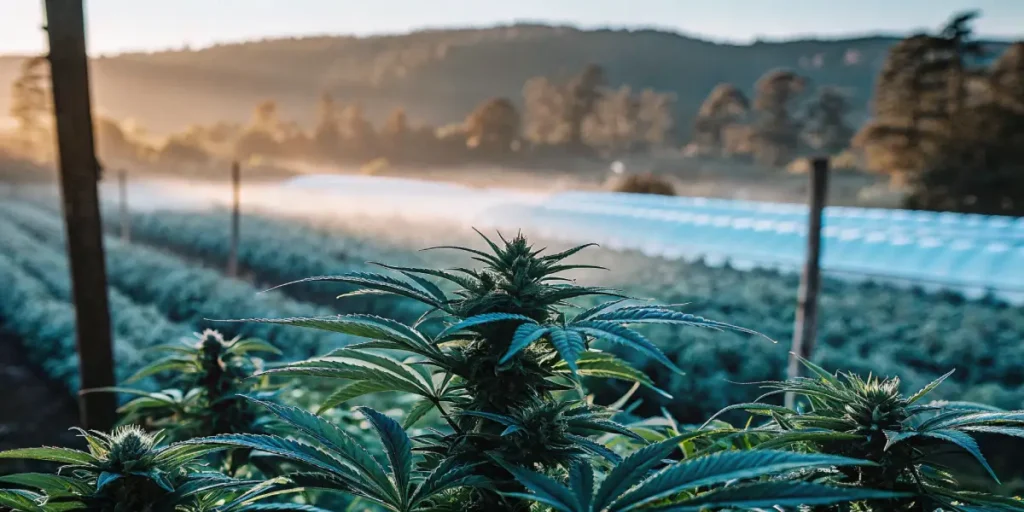
Water Availability Effects on Cannabis Laticifers
Water is life, especially for plants. The water availability effects on cannabis laticifers are profound. Too little water can be just as harmful as too much. Overwatering can suffocate the roots, while underwatering can lead to wilting and stress.
To maintain the right balance, develop a consistent watering schedule. Check the moisture level of your soil daily. For example, Bruce Banner plants, known for their vigor, still require a balanced water supply to maintain their robust laticifer activity.
The water availability effects on cannabis laticifers are further influenced by the quality of the water used. Chlorine and other chemicals found in tap water can affect the health of the plants, potentially hindering laticifer activity. Using filtered or rainwater can mitigate these effects and promote healthier growth.
Environmental factors affecting cannabis laticifers also include the timing of watering. Watering early in the morning can help reduce evaporation and ensure the roots have ample time to absorb moisture throughout the day. This practice is especially beneficial in hotter climates where evaporation rates are higher.
- Watering schedule: Adjust based on plant stage and climate.
- Moisture check: Use a soil moisture meter for accuracy.
- Drainage: Ensure pots have drainage holes to prevent pooling.
Proper water management ensures that the water availability effects on cannabis laticifers are positive, promoting healthy growth and resin production. This is essential for maximizing the potential of your cannabis plants.
Temperature Variations and Cannabis Latex Secretion
Temperature fluctuations can stress cannabis plants, affecting their latex secretion. Consistent temperatures are key for maintaining healthy laticifers. Sudden drops or spikes can cause plants to go into shock, disrupting latex production.
Indoor growers have the advantage of controlling temperature more easily. For outdoor growers, choosing the right time of year to plant can help mitigate temperature variations and their impact on cannabis latex secretion.
Temperature variations and cannabis latex secretion are closely linked, with extreme temperatures potentially causing irreversible damage to the plants. Utilizing temperature control systems, such as heating mats or fans, can help maintain stable conditions, minimizing stress on the laticifers and promoting steady latex production.
Environmental factors affecting cannabis laticifers include not only air temperature but also soil temperature. Cold soil can hinder root function and nutrient uptake, while excessively warm soil can dry out roots. Mulching and shading can help regulate soil temperature, ensuring a more consistent environment for plant growth.
- Daytime temperature: Keep between 70-85°F.
- Nighttime temperature: Avoid drops below 60°F.
- Ventilation: Ensure good airflow to stabilize temperature.
Strains like Blue Dream can tolerate some temperature variation, but it’s always best to aim for stability. Temperature variations and cannabis latex secretion are intricately linked, and managing these can lead to healthier, more productive plants.
Nutrient Levels Affecting Cannabis Laticifer Activity
Nutrients are the building blocks of plant life. Their levels can significantly impact cannabis laticifer activity. A balanced nutrient mix ensures robust growth and optimal latex production.
Essential nutrients like nitrogen, phosphorus, and potassium play a vital role. For example, a nitrogen deficiency can lead to yellowing leaves and reduced laticifer activity. Conversely, excess nutrients can cause toxicity, harming the plant.
Nutrient levels affecting cannabis laticifer activity can be fine-tuned through regular soil testing and adjustments. Micronutrients, such as calcium and magnesium, are also crucial for healthy laticifer function. Deficiencies in these can lead to stunted growth and decreased latex production, underscoring the importance of a comprehensive nutrient regimen.
Environmental factors affecting cannabis laticifers demand vigilant nutrient management. Over-fertilization can lead to nutrient lockout, where the plant is unable to absorb essential elements. Monitoring the balance of nutrients ensures that the plants receive what they need without the risk of overloading the soil.
- Nitrogen (N): Promotes healthy leaf growth.
- Phosphorus (P): Supports root and flower development.
- Potassium (K): Enhances overall plant health.
By monitoring nutrient levels, especially in strains like Gelato, growers can ensure that cannabis laticifer activity remains high, contributing to a successful harvest. Nutrient management is crucial in the quest for potent, resinous buds.
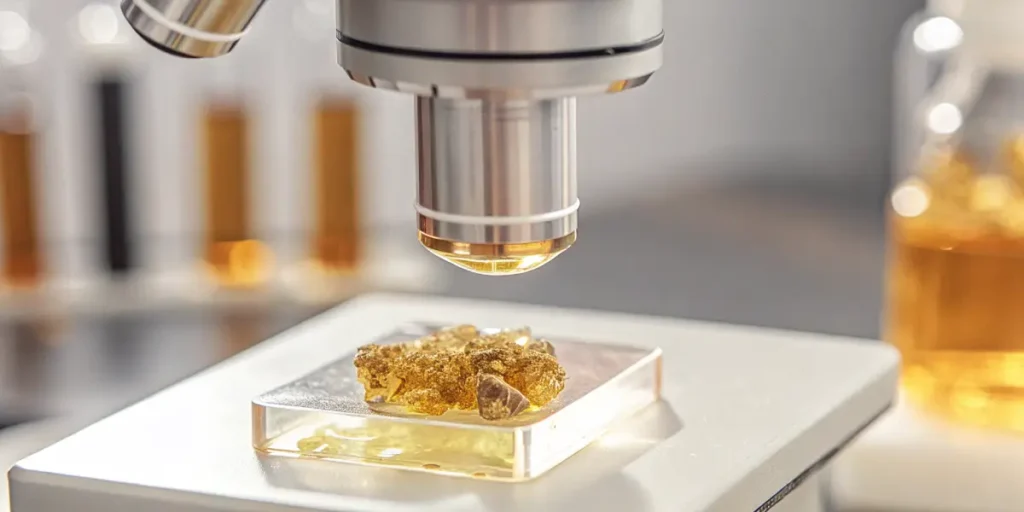
FAQs
What are laticifers in cannabis plants?
Laticifers are specialized cells found in many plants, including cannabis. They produce latex, a milky fluid that can play various roles in plant health. In cannabis, laticifers contribute to resin production, which contains cannabinoids like THC and CBD.
For growers, healthy laticifers mean more potent buds. Ensuring optimal environmental factors affecting cannabis laticifers can boost the quality and quantity of your harvest. This involves careful management of soil, water, and climate conditions.
Knowing the function of laticifers in cannabis plants is essential for maximizing resin production. These cells are an integral part of the plant’s defense system, producing compounds that deter pests and pathogens. By maintaining healthy laticifers, growers can enhance the plant’s natural resistance to environmental stresses.
Laticifers also play a role in the storage and transport of secondary metabolites, which include cannabinoids and terpenes. The environmental factors affecting cannabis laticifers can directly impact the concentration and profile of these compounds, influencing the plant’s aroma, flavor, and potency.
How does temperature affect cannabis laticifers?
Temperature is crucial in maintaining the health of cannabis plants. Extreme temperatures can stress the plants, affecting laticifer function and latex production. Consistent, moderate temperatures are ideal for optimal growth.
Indoor setups allow for precise temperature control, but outdoor growers need to be mindful of seasonal changes. Adjusting planting times and using shade can help manage temperature variations and their effects on cannabis laticifers.
The impact of temperature on cannabis laticifers extends to the plant’s metabolic processes. Extreme cold can slow down metabolism, while excessive heat can accelerate it, leading to imbalances in growth and latex production. Managing these temperature variations ensures that the laticifers remain productive and the plant maintains its vigor.
Environmental factors affecting cannabis laticifers, such as temperature, can also influence the plant’s life cycle and flowering time. By maintaining stable conditions, growers can ensure a uniform growth pattern, resulting in more predictable and abundant yields.
Why is soil composition important for cannabis latex production?
Soil composition provides the nutrients plants need to grow. It affects everything from root health to laticifer productivity. Nutrient-rich, well-drained soil promotes robust plant growth and optimal latex production.
Growers should regularly test soil pH and nutrient levels to ensure they meet the needs of their chosen cannabis strain. Adjustments can be made through the use of fertilizers and soil amendments to enhance cannabis latex production.
Soil composition impacts cannabis latex production by influencing root development. A well-structured soil with good aeration allows roots to expand, increasing the plant’s ability to uptake nutrients and water. This directly supports healthy laticifer function and latex production.
Environmental factors affecting cannabis laticifers include the presence of beneficial soil organisms. These organisms aid in breaking down organic matter, releasing nutrients that are essential for laticifer health. Maintaining a thriving soil ecosystem is key to optimizing cannabis latex production.
What role does water play in cannabis plant health?
Water is essential for all plant functions, including nutrient transport and photosynthesis. In cannabis, the water availability effects on cannabis laticifers are significant. Proper watering ensures healthy growth and resin production.
Overwatering can lead to root rot, while underwatering can cause stress. Monitoring soil moisture and adjusting watering schedules according to the plant’s stage and environmental conditions is key for healthy cannabis plants.
Water availability effects on cannabis laticifers are further compounded by the plant’s stage of growth. During flowering, water needs may change, requiring growers to adapt their watering practices to support optimal laticifer activity and resin development. This level of attention can significantly enhance crop outcomes.
Environmental factors affecting cannabis laticifers, including water availability, play a critical role in the plant’s ability to transport nutrients and perform photosynthesis. Consistent water management helps maintain plant vigor and supports healthy latex production throughout the growing cycle.
How do nutrient levels affect cannabis growth?
Nutrients are vital for plant health. They affect everything from leaf growth to laticifer activity. A balanced nutrient mix supports overall plant health and ensures robust resin production in cannabis.
Monitoring nutrient levels and providing a balanced fertilizer mix can prevent deficiencies and toxicities. This proactive approach supports healthy cannabis growth and maximizes the environmental factors affecting cannabis laticifers.
Nutrient levels affecting cannabis laticifer activity can also have a direct impact on the quality and potency of the resin produced. By ensuring that the plants receive a balanced diet, growers can enhance the concentration of cannabinoids and terpenes, resulting in a superior harvest.
Environmental factors affecting cannabis laticifers include the availability of trace elements, such as zinc and iron, which are crucial for enzymatic functions and overall plant health. Addressing these micronutrient needs can further support laticifer activity and boost latex production.





